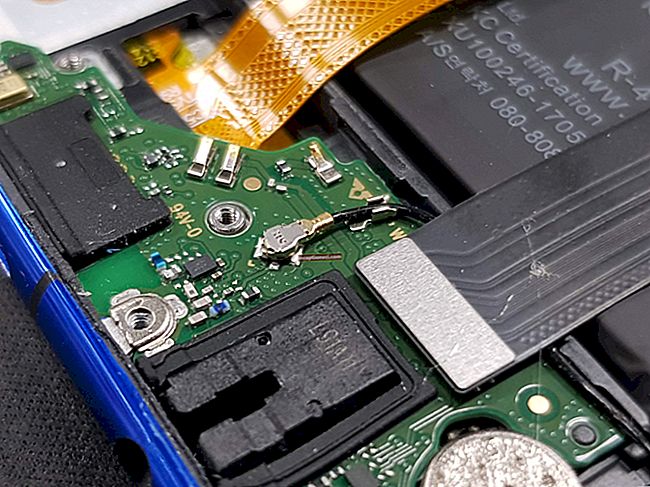Intel Core i7-980X Extreme Edition Processor
It's a fact that multi-core technology is really starting to take off now, isn't it? The first viable consumer dual-core processor hit the market in 2005-2006. Many do not see the benefit of multi-core design, and of course the software industry was not ready for it back then. Almost all applications were written for the same multithreaded software, and all of this took up to 99% of the processing time in one active processor core, while the other core sat quietly and did nothing.
But now users are already moving forward from dual-core to quad-core processors. In this more or less short period of time, there have been many changes. Operating systems already support multi-core solutions, new programs have appeared that support two and often more threads. And even a large number of games come along, they become multithreaded, taking advantage of multiple processor cores when used correctly, of course. Users are increasingly interested in powerful and multi-core solutions for processing applications. Many of them have reached their maximum clock speeds. Indeed, now it is from 3.4 to 3.6 GHz at the current maximum and it is thought that in the near future this trend will continue for several years. Therefore, it is logical that companies like Intel and AMD are doing everything possible to add performance and more processor cores per die, as well as improve the frequency per core.
Therefore, it is with great pleasure that I present you with an overview of the first consumer six-core processor. You've probably all heard of Gulftown - now it's the series code name for this processor. Intel used 32nm manufacturing technology that we know about from the Core i3 / 5 Clarkdale processors. Thanks to the new thermoregulation, Intel has managed to fit 6 processor cores into a single die with a surprising end result. The Core i7 980X, with the X for Extreme clocked at 3.33 GHz, is the fastest multi-core processor on the consumer market today. However, it retains 130W of heat output. Intel's Core i7 980X is as fast as its design implies. Moving from four to six cores has resulted in a near-perfect linear speed increase for applications that can use multiple processors.
 Some simple facts: The new processor still carries a 130W load, which is surprising given the number of transistors and two more cores it has when compared to quad-core processors. The processor will work on current LGA1366 motherboards. You will not need to buy a new chipset as it will work with the X58, you only need to update the System BIOS firmware. And that's just good news, it is the fastest processor on the planet, with 6 cores and 3.33 GHz. It does not draw an absurdly high level of current and you can use it on existing X58 platforms. So before we dive into the Core i7 Gulftown architecture, you probably want to know what processors are currently shipping with Intel's 1366 line.
Some simple facts: The new processor still carries a 130W load, which is surprising given the number of transistors and two more cores it has when compared to quad-core processors. The processor will work on current LGA1366 motherboards. You will not need to buy a new chipset as it will work with the X58, you only need to update the System BIOS firmware. And that's just good news, it is the fastest processor on the planet, with 6 cores and 3.33 GHz. It does not draw an absurdly high level of current and you can use it on existing X58 platforms. So before we dive into the Core i7 Gulftown architecture, you probably want to know what processors are currently shipping with Intel's 1366 line.

Let's see:
$ 284 Core i7 930 (Upper Main Tier)
$ 549 Core i7 950 (performance)
$ 999 Core i7 975 Extreme (Enthusiasts)
Core i7 980 Extreme at $ 999 (Enthusiast)
Keep in mind, you can still find and purchase the Core i7 920, 940, 960 and 965. But these processors will soon be hard to find. As you can see, the first entry product level starts at $ 284; The 930 recently replaced the 920, a pretty good processor, once you see what kind of performance it actually has. The 4-core Core i7 930 processor runs at 2.80 GHz.
In the middle segment of the elite level, we will be able to identify the Core i7 950 with 3.06 GHz.At the top of the range, we find a quad-core Core i7 975 processor, with 3.33 GHz that still boggles our minds. This particular processor will receive some competition from the Gulftown / 980X Core i7, and although it came out with a price tag of $ 999, its price dropped significantly in 2011.

Let's take a look at some of the technical specifications:
Intel Core i7 processor debuts with the following specs:
Six processor cores
SMT support, which allows processing up to 12 streams simultaneously
32 KB instructions + 32 KB L1 cache data per core
256 KB per core
Large 12MB L3 cache shared across all 6 cores
- RAM clock frequency 1066 MHz
- Up to 6 memory slots
2x Intel Quick Interconnect Path (QPI); 25.6 GB / s
Adding 7 new SSE4 instructions
Monolithic processor design - one die
Manufactured using Intel's 32nm High-K metal shutter process technology

The current composition is united in the architecture of the Nehalem family, each product in the series is labeled with its own code product. Bloomfield, for example, is the current Core i7 Quad Core line based on Socket 1366, while Gulftown is codenamed as a six-core processor. The architectural changes for Gulftown are as follows: an increase in additional physical processor cores resulted in 1,170 million transistors in the architecture. As mentioned, it is built on a 32nm manufacturing process, packed with 64KB L1 cache per core and 256KB L2 cache per core. All this is complemented by a large pool of shared L3 cache, which in the case of a six-core model reaches 12 MB. Of course, the Turbo Boost processor, QPI (Quick Path Interface), moves forward towards an integrated triple channel DDR3 memory controller, allowing the product to have more bandwidth, as well as the return of Hyper-Threading (the era of Pentium 4 technology), which has done truly amazing way. All this is explained further. Nehalem has brought improvements, with significant changes to Intel's approach to scaling and managing DRAM. Gulftown processor crystal on a 32 nm wafer.

Intel Turbo Boost
Intel, Nehalem processors starting with Core i5 600 and up include a feature called Intel Turbo Boost Technology. Under certain configurations and workloads, this technology provides better performance by increasing the core frequency. The new technology allows processor cores to be automatically tuned to run faster than the operating frequency of the base itself, even if the processor is operating below rated power, temperature, and current performance limits. This technology can work with any number of enabled and active cores or logical processors. This results in increased performance for both multi-threaded and single-threaded workloads. Example: If you put a heavy load on all six cores of the 980X Core i7, they will automatically increase the frequency (with proper cooling) to 3.46 GHz, which is an additional 133 MHz. However, if at least one core is used, then Turbo Boost can go a little higher - it can increase the base frequency of this particular core to 3.6 GHz, providing an additional 266 MHz. Thus, Intel Turbo Boost is a very smart technology in the sense that single-threaded applications will get a little more performance.

Fast Bus Interconnect (QPI)
The Core i7s includes both the memory controller and I / O systems integrated into the processor and therefore excludes Intel's front side bus (FSB) altogether. It is being replaced by one or more high-speed buses called the Fast Path Bus (QPI), formerly known as the Serial Bus Interconnect or CSI.
The QPI function has a higher bandwidth than traditional FSB and is better suited for scaling systems. AMD's HyperTransport bus is similar to what Intel is doing today — a high-speed point-to-point component, or processor communications / communications tool. The Intel processor was tied to the system bus, which began to interfere with performance.Intel's QPI architecture allows three or even quad-core memory channels to be plugged directly into a processor with an integrated memory controller.
Intel also added PCI Express buses directly to the processor. This will definitely provide more bandwidth to ensure high performance of the video card and remove any inconsistencies with other system components. Paired with the X58 Northbridge and PCIe 2.0 interface, it allows two x16 configurations, or even four x8 PCIe configurations. Many good additions, you see, especially with the additional growth of USB 3.0 and SATA6G controllers.

QPI is one of the new building blocks of Nehalem's extensible processor architecture. Gulftown has two QPI buses running at 6400 MT / s. QPI uses buses up to 6400 MT / s (millions of transfers per second) in the upper range of products, including the 980X processor shown today. Above, the Core 980X i7 cores are shown, with text overlaid describing what each segment stands for.
Three-channel memory controller
With the advent of Core i7, we learned about CPU integrated DDR3 SDRAM memory controllers from one to three 64-bit memory channels (physically inside the memory controller there is actual support for four, but only three are active) - all this is what is called a three-channel memory controller. Thus, the total memory bus width is increased from 128 to 192 bits, which can significantly increase the bandwidth. Intel eliminated the old bus slowdowns by developing the Nehalem architecture based on a 64-bit memory controller tied directly to the silicon of the processor. As a result, this new design should boost bandwidth utilization by up to 90% - a nice jump from the 50-60% utilization of the old bus. The onboard controller of course supports both registered (server market) and unregistered (consumer) DIMMs. The controller is fast, very fast, with support for DDR3-800, DDR3-1066, DDR3-1333 JEDEC, and there is still room for future expansion. The memory controller is capable of handling 64 GB / s on its own, while the implementation of the full three-channel DDR3-1333 gives only 32 GB / s of maximum bandwidth utilization. As for the numbers, we can conclude that even DDR3-2000 will not be the maximum load on the controller. Gulftown, by the way, is advertised with support for up to DDR3 1066 MHz. In this review, we will be using OCZ Blade DDR3 2133MHz OCZ memory. This is a memory based on Elpida chips in HYPER.

Hyper-Threading
Inevitably, chips based on the Nehalem family will have between two and eight cores, the top-tier range will be able to handle two independent software threads per physical processor core. This is called Hyper Threading Technology, a name given by Intel to the new concept. This allows the processor to execute pretty much two different threads at the same time.

This was a feature of the single-core Intel Pentium 4 processors, but was later discontinued with the advent of multi-core chips, in essence this technology is the same as before, only now at the highest level. With two threads per core, Core i7 Gulftown chips will be packed with no less than twelve logical cores at startup. If you look at the screenshot above, you can see what's going on.
X58 Chipset
The high-end Intel Core i7 processor paired with the Tylersburg chipset is known as the Intel X58 Express chipset. This chipset uses the same ICH10 (R) "south bridge" as the Intel P45 (Eaglelake) chipset, but the X58 is obviously radically different from it:
The X58 Express will use the LGA1366 socket (also known as socket B).
No more memory controller.
QPI serves as the connection between the Core i7 and X58 Express.
Large bandwidth. The main feature on the H55 chipset, like the P55, is that there are many PCIe lanes available to you. There is support for 2 PCI Express x16 2.0 slots with an option for four x8 slots to support graphics cards with multiple GPUs.
Power consumption and temperature
So this is where testing a physical processor begins.First you need to take a quick look at the power consumption of the processor in idle mode and under load and, of course, overclocked.
Core i7 980X + 5870 Processor: Idle - 139 W; load - 150 W; maximum - 272 W
Core i7 980X + 5870 @ 4.4 GHz: Idle - 184 W; load - 184 W; maximum - 360 W

Balanced State IDLE is a tuned OS in power balanced mode, throttled by the SpeedSteps processor. This produces 139W and is installed with a Radeon HD 5870 video, but the GPU is idle here. If we switch to Windows 7 or Vista in performance mode, then we see an increase in power up to 150 watts even in idle mode. Now, it is emphasized that we see 6 cores, the energy is consumed up to 272 W (in general, for a PC, measured at the outlet). 272W - 139W = 133W power, which is in line with advertised. Once we overclock all four cores to 4.4 GHz, everything is much faster, we are now at the peak of consumption of 360 watts - 139 watts from the normal frequency of balanced mode = 221 watts of power consumption in total. But let's take a look at the temperatures. So, we see six fully loaded cores, with 100% utilization of each core in the full Prime95 benchmark, turbo mode gives another 133 MHz for the processor, resulting in only 3.4 GHz clock speed. Water-cooled (semi-passive) Zalman Reserator XT is now applied. You can see the idle temperature is 25 ~ 30 degrees C. And when the load goes on for a long period of time, we see that the maximum peak temperature is about 55 degrees C. The same results are obtained with this setup on quad-core Core i7 975 processors. Maybe a little -a bit higher, but it's really not bad.
Now let's look at overclocking.
Overclocking Core i7 980X
With the old bus officially removed from the processor, little changes during overclocking. It's a little strange, but the concept remains the same. In the BIOS you will find a 133 MHz register called the base clock, think of this as your new accelerator described above - you can just play around with it. Of course, if you have an Extreme Edition processor, things are much easier. Just play around with the CPU voltage and multiplier, and even on cooler air cooling you can get some pretty awesome results. First of all, check your current value. The Intel X58 board uses a dynamic multiplier. The base frequency together with the 133 MHz multiplier is 3.33 GHz at a factor of 25. This is your clock speed. In the default configuration, however, it is also possible to apply Multiplier 26 with Turbo Mode enabled. So your Core i7 processor will go beyond the default specifications.

Now, if you want extreme overclocking, firstly, in the BIOS, disable SpeedStep, C1E and TM functions designed to prevent the processor from dynamically overclocking down or up based on various variables, including thermal overloads and 100% CPU load. Now we just increase the multiplier until the system crashes, then we increase the voltage and start all over again. Inevitably, we will find a point where our maximum frequency or temperature simply spirals out of control. For overclocking, we increase the voltage by 1.42 V on the processor and use a Zalman Reserator XT liquid cooler. Finally, everything boots easily into Windows at 4.0 GHz with a Core i7 980X processor. At that time, the temperature began to rise slowly, we were found to be 100% stable at 4.4 GHz. Overclocking itself is a fairly easy thing to achieve with this processor.
Keep in mind that overclocking takes a lot more power from the system, and also take into account that your cooling system must be proper as a processor with four to six cores must produce a lot more heat. At 4.4 GHz, all 6 cores on it are overloaded (but not graphics), we are using approximately 360 watts (6 + 6 HT cores are 100% loaded). Check out the stress test. Here you can see the processor clocked at 4 400 MHz We applied 1.42V to maintain stability with extreme CPU overload.On this setting, temperatures are up to 75 degrees C, and this is really the maximum, and it's time to stop at it. But I'm sure we just added another 1 GHz of each of the 6 cores for total freedom.
CPU-Z Screenshots
So, as you can see, the frequency looks relatively weak. Turbo mode is on, our processors are working, and as such - a 133 MHz boost.

This L3 cache is, of course, nice and large, at 12 MB. Then 6x256KB L2 cache and obviously 384KB L1 cache (6x 32i + 32g per core). We find out that 1066 MHz DDR3 is supported in a triple channel motherboard, but 1333 MHz as such is not.

You can set the memory frequency much higher, of course, once you start playing at the base frequency. But that means the 980X Core i7 product is more limited in the available memory dividers.

Last but not least, regarding the motherboard. For tests and overclocking, we used an ASUS Rampage II Extreme motherboard and the latest SBIOS 1802.

Conclusions and conclusion
Well, Intel won again. The 980X Core i7 is grand and majestic - It's their USS Enterprise - big and powerful. To be honest, no one expected the processor to be that good. The benchmark results measure performance per core. Therefore, the test results, as such, can be a little overshadowed. Most of the software applications used are able to work on two, and at best on four threads. So while benchmarks are showing crazy profits, the reality is that with regard to a Core i7 975 processor, in almost any situation you will not notice a performance difference, unless your application is very suitable for multi-core processors and therefore very advanced. This is pure reality. So where is the main shine of the i7 980X then? He's in several directions. Content creation, video transcoding, 3D rendering and product design with software such as Cinema 4D in MAXON, virtualization, software compression / decompression files, and some games are starting to get massively multithreaded support. And of course, the new processor is good for overclocking enthusiasts - the 980X is simply a giant in this regard.

Intel has done this homework, they don't skimp on clock speeds and the additional L3 cache speeds up even single threaded applications a bit. The new number of cores and 32-nm manufacturing technology seem to work wonders. The fact that we have six physical cores clocked at 3.33 MHz and Turbo up to 3.4 GHz but still manage to stay at 130W of thermal power is absolutely impressive, which is good! Seriously, the much weaker Core i7 920 processor has the same power. All these thoughts are subjective, but look at the progress! If we go back to 2003 and look at the statistics of a much slower processor (one core) Pentium 4 Extreme Edition with a frequency of 3.2 GHz (Socket 478), then this processor consumed 92W. My point of view? If you add 6 cores together, then that comes out 552 watts. Now in 2011, we only consume 130W, and the processors have six cores, upscaled by HyperThread to 12, which are each much faster than a single-core Pentium 4.
 Now, is there anything negative? Of course - the prices put it out of reach for most consumers. And the only thing that can be a little disappointing is the memory partitions. The processor is advertised to only support DDR3 1066 MHz, which may be triple-channel, but it feels a bit lacking. Hinting that overclocking based on frequency will cause your memory to increase in frequency with it, you should aim for a bit more memory bandwidth. Now about the overclocking itself. First of all, this is something that the engineers did not really put on the serious efforts of the processor during the tests. They played with voltage and an unlocked multiplier for 10 minutes and got a stable processor at 4400 MHz.Now - they used liquid cooling, but this is a semi-passive cooling unit Zalman XT reserator, which offers more cooling performance. In other respects, we can say that the 980X Core i7 is a great processor when overclocked.
Now, is there anything negative? Of course - the prices put it out of reach for most consumers. And the only thing that can be a little disappointing is the memory partitions. The processor is advertised to only support DDR3 1066 MHz, which may be triple-channel, but it feels a bit lacking. Hinting that overclocking based on frequency will cause your memory to increase in frequency with it, you should aim for a bit more memory bandwidth. Now about the overclocking itself. First of all, this is something that the engineers did not really put on the serious efforts of the processor during the tests. They played with voltage and an unlocked multiplier for 10 minutes and got a stable processor at 4400 MHz.Now - they used liquid cooling, but this is a semi-passive cooling unit Zalman XT reserator, which offers more cooling performance. In other respects, we can say that the 980X Core i7 is a great processor when overclocked.
It's obviously aimed at professional users, guys who need quick video transcoding, or even some of the extreme hardware aficionados. Usually no one ever justifies a processor in this price range, nor can I justify this one, with 6 physical cores. However, behind him, as we all know and understand, is the future. Fortunately, you don't have to buy a new motherboard, you only have to update the firmware of the X58 board and everything will go well. So if you can, and are willing to afford it ... You will not regret your purchase, even for a second. This processor is a true gem.









